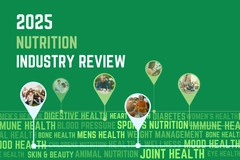
- Industry news
Industry news
- Category news
- Reports
- Key trends
- Multimedia
Multimedia
- Journal
- Events
- Suppliers
Suppliers
- Home
- Industry news
Industry news
- Category news
- Reports
- Key trends
- Multimedia
Multimedia
- Events
- Suppliers
Suppliers
Researchers suggest replacing wheat flour with chickpeas to tackle heart disease

23 Mar 2021 --- There are “serious shortcomings” in the way dietary fibers are analyzed, according to researchers from the Quadram Institute and King’s College London.
Their detailed analysis explores how different starch sources are digested when they are part of complex plant tissues. They have now created a basis on which new food ingredients can be developed to improve health.
By replacing common fiber sources such as wheat with pulses like chickpeas, the study authors say industry can help consumers prevent cardiovascular diseases.
The study analyzed the different mechanisms fiber sources have on starch digestion, suggesting types of fiber – rather than quantity – play a significant role in dietary health.
The importance of fiber
Consuming adequate fiber is essential in combating diseases such as Type 2 diabetes, heart disease and stroke. However, most UK adults get much of their dietary fiber from processed foods containing a lot of starch, which can be easily digested into glucose.
Overeating of the highly digestible forms of starch causes spikes in blood sugar levels and is associated with an increased risk of these diseases.
To address this, the researchers investigated how tissues from chickpeas and durum wheat compared – plants that represent two different methods of storing starch reserves in their seeds or grains.
Chickpeas vs. wheat
Study author Cathrina Edwards tells NutritionInsight that chickpeas are more effective in limiting the amount of starch digested.
“Chickpeas not only contain more dietary fiber than wheat, but the type of dietary fiber is different. The dietary fiber in chickpeas can protect starch (carbohydrate) from being digested by acting as a natural barrier that ‘blocks’ digestive enzymes from reaching the starch inside the plant cells.”
In wheat, this barrier is thinner and more “leaky” and therefore less effective at limiting the digestion of starch, she explains.
“The dietary fiber ‘barrier’ is also affected differently by food processing treatment. If wheat is cooked, the dietary fiber breaks up into smaller pieces, but when chickpeas are cooked, the whole plant cells separate from each other, meaning that the dietary fiber (the plant cell wall) is still an effective barrier.”
 The different fiber structures of wheat and chickpeas revealed in the study.Bread roll quality
The different fiber structures of wheat and chickpeas revealed in the study.Bread roll quality
The study, now published in Nature Food, combined microscopy techniques with advanced human digestion models to track the effects of food processing on the different cell wall structures and assess how this changed digestibility.
The findings show that dietary fiber structure has a serious impact on how digestible a product can be. This, therefore, highlights a pitfall in relying only on chemical analysis for characterizing different types of fiber, asserts Edwards.
“It also provides an understanding of some of the mechanisms by which different sources of dietary fiber impact on nutrition and health.”
The findings also provide a basis for developing new ingredients or food processing techniques that could deliver more of fiber-rich foods’ benefits. Adjusting the fiber source in products like bread, for example, could now prevent many of the health risks associated with wheat.
Researchers at Quadrum have already developed PulseON, an ingredient made from chickpea using different types of milling and drying processes that, unlike normal flour milling, preserve the cellular structure and, therefore, starch resistance digestion.
Meanwhile, a human trial showed that partly replacing wheat flour, made of refined carbohydrate, with PulseON in staple foods like white bread lowered the blood glucose response by 40 percent.
Future studies
Edwards says the next step will be to investigate how these different digestibility characteristics affect human health outcomes.
The current investigation was also limited in scope, she explains.
“This study was based only on laboratory models of digestion, which are an excellent method for studying mechanisms in a controlled environment. We did use sophisticated models that are based on what happens in the human gut, but they are still much simpler than the human body.”
Fiber has been a rising area of consumer and industry interest in the wake of the COVID-19 pandemic. Last year, German milling group GoodMills Innovations released a baking product to boost consumer immunity through fiber.
By Louis Gore-Langton











